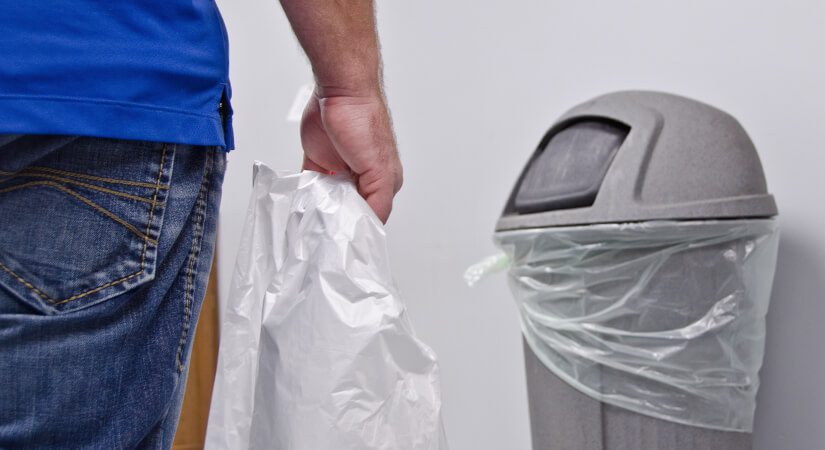Can Liners: High Density vs. Low Density
A trash bag is a trash bag. That’s the common notion when discussing details about can liners with the average person. In reality, there are several factors to consider when selecting the correct bag for your trash receptacles. Size, color, thickness and resin type are all variables that will determine how well your liners perform. Probably the most fundamental difference is the type of resin being used. Whether the liner is high density or low density tells us how the bag will react to certain types of refuse and knowing the characteristics of each will allow you to make a more informed decision on what type of liner will work best for your situation.
Linear Low Density
Linear Low Density can liners are made from high quality resins that are highly resistant to puncturing and tearing. The exceptional strength and stretch properties of Linear Low Density trash can liners make them a great option for kitchen trash that may include glass or sharp, irregularly shaped objects. Various resins that comprise Linear Low Density polyethylene include butane, hexene and metallocene.
Linear Low Density (LLD) Trash Can Liner Advantages
- LLD can liners have superior stretch properties making them highly puncture and tear resistant
- LLD can liners are an excellent choice for waste with sharp and jagged edges
- LLD can liners strength and stretch properties make them a great multi-purpose can liner
High Density Trash Can Liners
High Density can liners are made from high molecular density resins. High Density trash can liners are great for the office, restroom, or any type of trash that does not include sharp edges, for these will “zipper†the liner (a small tear turns into a long one quickly). High Density trash can liners are also less expensive per unit than low density trash can liners.
High Density (HD) Trash Can Liner Advantages
- HD can liners are an excellent economical choice for heavy, wet trash and soft refuse as long as there are no sharp or irregular shaped objects
- HD can liners have a superior vapor and moisture protections, and are USDA and FDA approved for food use
- HD can liners have smaller, lighter cases, which lower freight, storage and warehousing costs
- HD can liners are more temperature resistant (-40 degrees to +212 degrees)
There are other less common types of resins used in liners, however the vast majority of them fall into one or the other or a blend of the two. By know the tendencies of each can liner you can now predict which type will handle what your facility needs. The rest of the equation will involve dialing in the perfect size for your receptacles and raising and lowering the thickness to make the most out of your supply budget.

